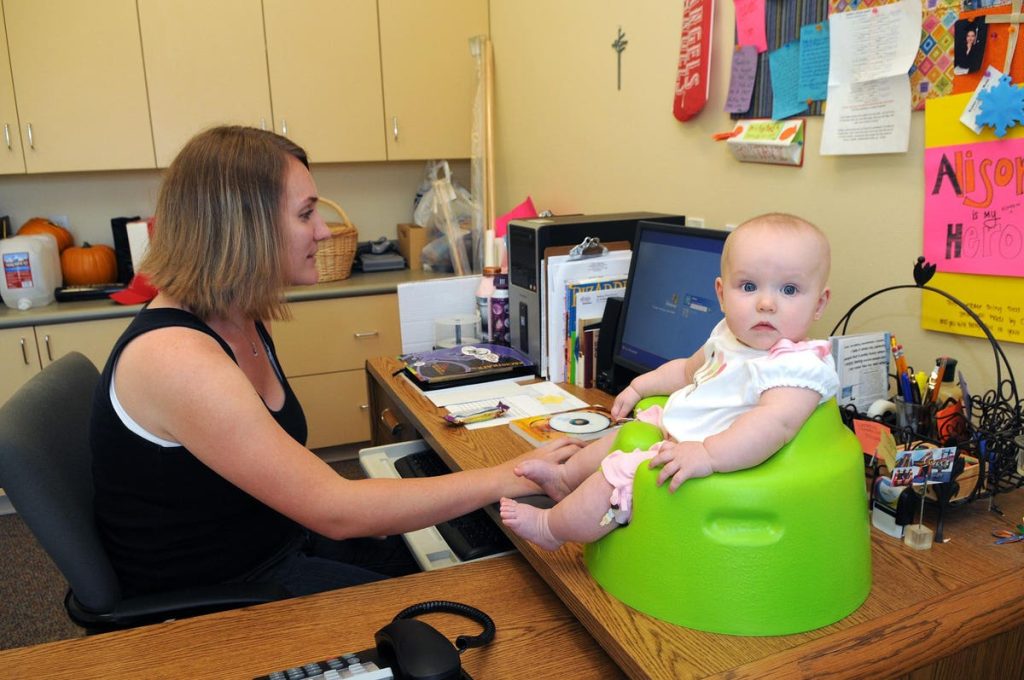In 2003, the New York Times Magazine published an in-depth piece on the so-called “opt out” generation: one-time working mothers who had left their high-powered and hard-earned careers behind in order to be primary caregivers.
2003 was twenty years ago: The O.C. was still on the air; Lil John’s “Get Low” topped the charts; the 2-year-old iPod was Apple’s highest-volume product. Yet, the discourse around working motherhood sounds like it could have been written yesterday.
The women interviewed describe having no real choice: One worked crushing hours at a law firm for months while nursing a newborn, only for the judge to postpone the trial at the last minute so he could go on a fishing trip. Another left her job after she was denied a reduction in hours, which had crept from 50 to 60 a week.
The article concludes, “The exodus of professional women from the workplace isn’t really about motherhood at all. It is really about work.” The nature of modern work, in other words, has always presented a structural obstacle for primary caregivers.
Distributed Work: A Once-In-A-Lifetime Opportunity
What has changed in two decades? Childcare is more expensive than ever. We still face a persistent “broken rung” in elevating women to top leadership positions. When women leave the workforce, we still fall into the trap of framing it as an expected outcome of motherhood. But we have something new: remote work.
Remote work makes the elusive dream of work-life balance more attainable for working parents and other caregivers, particularly the skyrocketing population of working-age people responsible for eldercare. With no commute and the flexibility of the home office, it becomes possible to do things like drop off lost homework, greet the home health aide, and feed and walk pets, while still hitting deadlines and producing results at work.
This isn’t just good for working caregivers, it’s good for businesses, too. When managed effectively, fully remote teams have been shown to excel across almost every performance metric, and their levels of engagement are dramatically higher than hybrid or in-office counterparts. Remote companies can benefit from a global pool of talent and tend to be more innovative than their peers.
So what can leaders do to unlock this opportunity? Here are three remote work norms that help parents (and everyone else) level up their productivity, energy, and creativity.
1. Be Flexible, Not Just Remote
Giving employees autonomy over when they work is just as important as the freedom to choose where they work. Parents cite having a flexible schedule as the most important factor in their ability to balance work and childcare, closely followed by the ability to work remotely. Flexible work might look like the ability to block time for occasional interruptions like doctor’s appointments or might look like different hours—for example, signing off early in the afternoon for pickup but making the time up after bedtime.
Flexible hours also allow companies to attract top talent (job seekers cite flexible work as one of the top three things they look for in a role) and unlock greater productivity in all workers — many workers say flexible work makes them more productive, in part because everyone can optimize for their “peak” hours of focus.
Companies can offer greater flexibility by implementing “core hours” – a block of three or four hours in the middle of the day designated for collaborative work, or by designating one or two days of the week for meetings and synchronous time. Beyond creating flexibility, these kinds of policies also make sure collaborative time is used efficiently and make it simpler for global teams to coordinate across time zones.
2. Watch Out For Gender And Proximity Bias
A 2014 study by the American Sociological Association found that women were viewed much less favorably than men when requesting flexible work arrangements: they were considered eight times less likable, five times less committed to the job, and were 10% less likely to have their request approved.
Flexible workers also face headwinds in career progression due to proximity bias: managers overvalue the work of people that they see more often. (Any team can experience it, but it’s most pronounced on hybrid teams.) Managers are more likely to give these people coaching, promotions, and better assignments.
Simply recognizing and talking about these forms of bias is a start. Beyond that, leaders should take steps like planning for equal one-on-one time with each team member, relying on objective performance metrics wherever possible, and implementing anti-bias training and education to mitigate unconscious prejudices.
3. Have Fewer, Better Meetings
Some remote teams struggle with a persistent culture of overmeeting. Research from Microsoft Workplace Insights found that the average amount of time in meetings jumped 10% when pandemic-era remote work began. New managers in particular hold 29% more meetings than more experienced managers, speaking perhaps to a certain amount of anxiety over what employees are doing with their time.
Overscheduling undermines the central thesis of remote work by reducing productivity and reducing flexibility, while creating an environment of mistrust: a particularly frustrating problem for working parents and others seeking better balance in the workplace. Employees are 71% more productive when meetings are reduced 40%, thanks to an increased feeling of autonomy and personal accountability.
After eliminating meetings, it’s also important that the ones that remain are impactful and effective. Employees experiencing “Zoom fatigue” are 64% more likely to look forward to a meeting that is well-planned, structured, and oriented around an outcome (rather than a status check.)
What It Means To ‘Have It All’ Today
Working parents, and mothers in particular, have long been subject to a narrative centered around attaining the elusive state of work-life balance sometimes called “having it all.” “Having it all,” a term popularized by Helen Gurley Brown, the longtime editor-in-chief of Cosmopolitan, in 1982, has generally been understood to be a kind of fictional bingo card wherein one’s family, career, and social world align in perfect harmony.
But that’s an outdated definition of “having it all” for the modern parent and for the modern workforce. It’s no longer desirable in the same way to work towards a corner office, flashy business travel, or many of the other traditional trappings of a high-octane career: the perks that motivate people in their careers today are structural: respect, accountability, autonomy, and trust from their employers.
When leaders listen to that message and put the architecture in place for exceptional remote work, everyone stands to benefit. Better remote work frees up the entire workforce — from recent grads to senior leaders — for more balance and independence. If that’s what it means for working parents to have it “all,” they’re really not asking for very much.
Read the full article here










